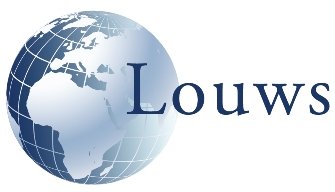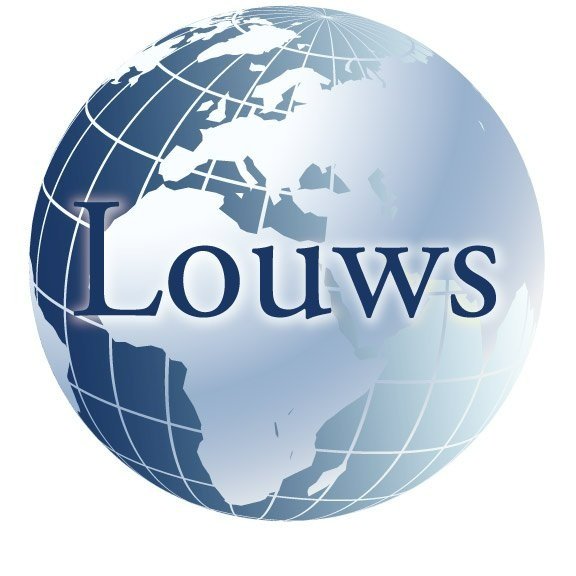Winning the business - period! - Part 2
What’s it like from the prospect’s perspective?
There are basic core competencies that are just plain “price of entry’” credentials.
The more time you spend on selling these, the more leery the prospect becomes of the agency’s ability to actually deliver these expecteds.
Going back to the car buying scenario in Winning the Business Part 1, imagine what you’d be thinking if the salesperson tried selling you on the fact that the car you were looking at had 4 wheels, an engine, and a 36-month warranty. “What are they not telling me?”
Where are those who created the credentials? Having sat through some 600+ new business pitches, it’s become painfully obvious that much of the work being used as credentials (creative, digital, media plans etc.) had been done by those no longer with the agency. And clients too have this pegged.
So plan for how you will deal with that question.
Still having members of the team that worked on the business sometimes suffices.
If it’s about media, research or certain proprietary algorithms, your established and unique processes and systems can help eliminate the need to produce the people who created them.
Remember however, having brilliant solutions to a prospects current issues, all but eradicates the need to produce the people who created the companies credentials.
Lead with ideas: If you’ve worked on the client side, you know how prospects are constantly comparing notes with others on their team and evaluating you against your peers - including the incumbent.
Case in point: Highlights from a ubiquitous national franchise brand’s conversation amongst the selection committee following a recent Agency new business Zoom pitch.
“It’s obvious they have smart people”.
“Great ideas - they clearly know something about our business”.
“Wonder if they have sufficient production & support capabilities to manage these ideas with our nationwide franchisee network?”.
The following day, this was the first question to the agency.
“What’s your national capability in terms of a field force to deliver and manage these ideas to our franchisees in all 6 regions?”
And so, the dance continued….
Turned out, based on the clients’ business model, the agency would have had to hire over a dozen people to support the client’s franchisees national network.
At first I thought this was a deal breaker, until the lead agency presenter astutely suggested that if this was the only hurdle to being hired, they would attempt to make a deal with the top field account executives at the incumbent agency (who would necessarily need to be let go) to entice them over to continue working on the brand.
Client agreed. Agency hired 6, and as the client was already on board, worked with the agency to hire the other 6.
Agency sold them on the solutions hook avoiding putting the client on the path of compare credentials.
If they had, they would have lost miserably.
Why?
Their key agency competitor already had a national network of field account executives in place and had been pushing that (credential) vs. bringing new and innovative ideas to the table to solve the prospects most pressing issues.
Agencies love commoditizing their credentials
Everyone and their uncle’s in love with the credentials approach. It’s slides 1-10 in almost every agency’s introduction to a prospect.
Unfortunately, the more the team talks about their history and experiences, the more comfortable and prouder the team members become.
It’s a subject we know a lot about and can talk about with absolute confidence. It’s also what’s drilled into the team and rehearsed to death.
It’s what we’re sold on.
In preparing for a pitch, it’s fast and easy. You slap together a sizzle reel and PowerPoint™, throwing up all your great credentials, giving them a bespoke appearance to the prospects business, in the hope that something you say will sufficiently impress the prospect into either hiring you or moving you ahead to the assignment/spec stage.
However, prospects are no fools. All they need to sit through are a few of these presentations to immediately recognize that, closing their eyes and listening carefully, all are basically saying the same thing, just the names, dates and places are different.
And most harmful to winning business, once you’ve commoditized your credentials, you’ve framed the conversation for the prospect to compare your similarities to the competition instead of your differences and relevant uniqueness’s.
Every credential has a downside to its upside
“We were founded in 1950, have over 3,800 employees on 4 continents with retained billings of $2.8 billion.”
1950 Upsides = established, reliable, substance.
1950 Downsides = old, redundant, irrelevant.
3,800 employees Upsides = substantial, deep, availability.
3,800 employees Downsides = bloated, slow, lack of bespoke treatment.
4 continents Upsides = global reach, global support, enterprise expertise.
4 continents Downsides = irrelevant, expensive, not local enough.
$2.8 Billion Upsides = substantive, recession proofed, credible.
$2.8 Billion Downsides = small fish in large pond service, irrelevant to our local markets, we get brawns, others with $’s get the brains.
Whether it’s and Upside or Downside is dependent not upon what we think it is, it’s upon what the prospect (buyer) deems as valuable, price of entry or irrelevant.
Key Actions:
Think relevance - how will it contribute to achieving the prospects agenda.
Never rely on your past to convince others of their future.
Avoid selling what you’re sold on, unless they (prospects) too are impressed by it.
Think Capability (show what you can do) vs. credential (what you’ve done).
Never start with credentials. Always talk Issues and Solutions customized to the prospect, while sprinkling in agency credentials as proof the ideas can be delivered.
How to stop 80% of the wasted time in pitch preps and rehearsals
With an average closure rate in the agency business hovering around 33%, it’s no wonder many consider their involvement in new business as a “necessary evil”, one that’s always an imposition to the daily running of one’s businesses.
Here’s how you cut out the waste.
First, figure out what you’re there to solve and work on providing solutions (Ideas) - it’s why the prospect is there!
Next, work on the functions – do we have it well structured, planned, cast right, politicized well, competitively appealing?, etc. This is the strategic positioning.
Finally, figure out the form – is it well choreographed, visualized, timed?, etc. This is the product management or pitch architecture and rehearsals.
In terms of time spent, think: 70 – 20 – 10
70% solving their issues
20% putting it all together – function
10% getting it packaged and ready for delivery – form
If you’re going to err, do it in form or function, never in the creation of solutions.
This is why prospects come. This is why prospects buy. This is why clients stay.
And when you didn’t have any (ideas), or were unable to sell them, this is mostly likely why you weren’t hired.
What about chemistry?
There are those new business “experts” who will contend that it’s All About Chemistry.
A marketing director client of ours at a global package goods company said it best: “If I was up for murder, liking my lawyer would be the least of my concerns. Knowing they could get me a verdict of not guilty, would be!”
You would be amazed at how many of our advertiser clients have privately confessed, while working with them as a search and marketing consultant, that deep down they thought their respected agency counterparts were, “Some of the most egotistical, arrogant, self-centered geniuses I have ever met. And thank God for that!”
There are those who naturally come across as charming, affable, with endearing personalities to whom people are immediately attracted.
To many, these are positive traits.
However, we have met many a CEO, Managing Director, CFO, Marketing Director who has been taught to “respect the good bad guy”, for this is how they have been taught to model themselves.
And for all the 21st Century’s focus on inclusion, enablement and progressive leadership, someone forgot to send these decision makers the memo.
For it would seem they rubber stamp things they just don’t feel is relevant to leadership itself. More important for the workers. You know “do what I say not what I do” syndrome that has been the immovable hallmark of leadership for centuries.
These people have to make the hard decisions, decisions that are not always inclusive, politically correct or win popularity contests.
They are oftentimes somewhat aloof and inaccessible to many a sign of charisma, importance and gravitas.
As such, they in turn tend to gravitate to like persons who they then believe belong to that important and respected and exclusive group.
On the other hand, there is the expectation that others that service them need to be accessible, pleasant and pliable.
So are you damned if you do and equally damned if you don’t?
The answer lies not in personality or comportment. Not to which group you belong. Not what your title is. Rather in approach and raw brain power.
Step 1: Demonstrate a keen interest in a client business, by first asking intelligent and thought-provoking questions.
Are we not enamored by those who find us fascinating?
Step 2: Give the prospect ideas of how to achieve their expectations and resolve their issues.
Great ideas that solve their marketing problems, beyond their expectations. This will make decision makers love you.
Step 3: Now… work on the charming, thoughtful and endearing components of building chemistry.
The last word
Remember the old adage:
“People do not care how much you know until they know how much you care”.
Then worry about the schmoozing and boozing. That’s the icing on the cake.
Don’t make the mistake and think the icing is the cake – the innovative solutions are.
Clients find nothing more disturbing and wasteful of their time than a really nice fellow who has nothing between his ears.
Source: Over 4 decades, internally conducted interviews, with some 15,000+ advertisers who buy agency services to find out why they hire and fire agencies. (last conducted 2021/2022)
Next Month: Part 1 of a unique quartet Leadership Series which we are affectionately calling “Spaghetti Leadership” the title of which will immediately become evident.


